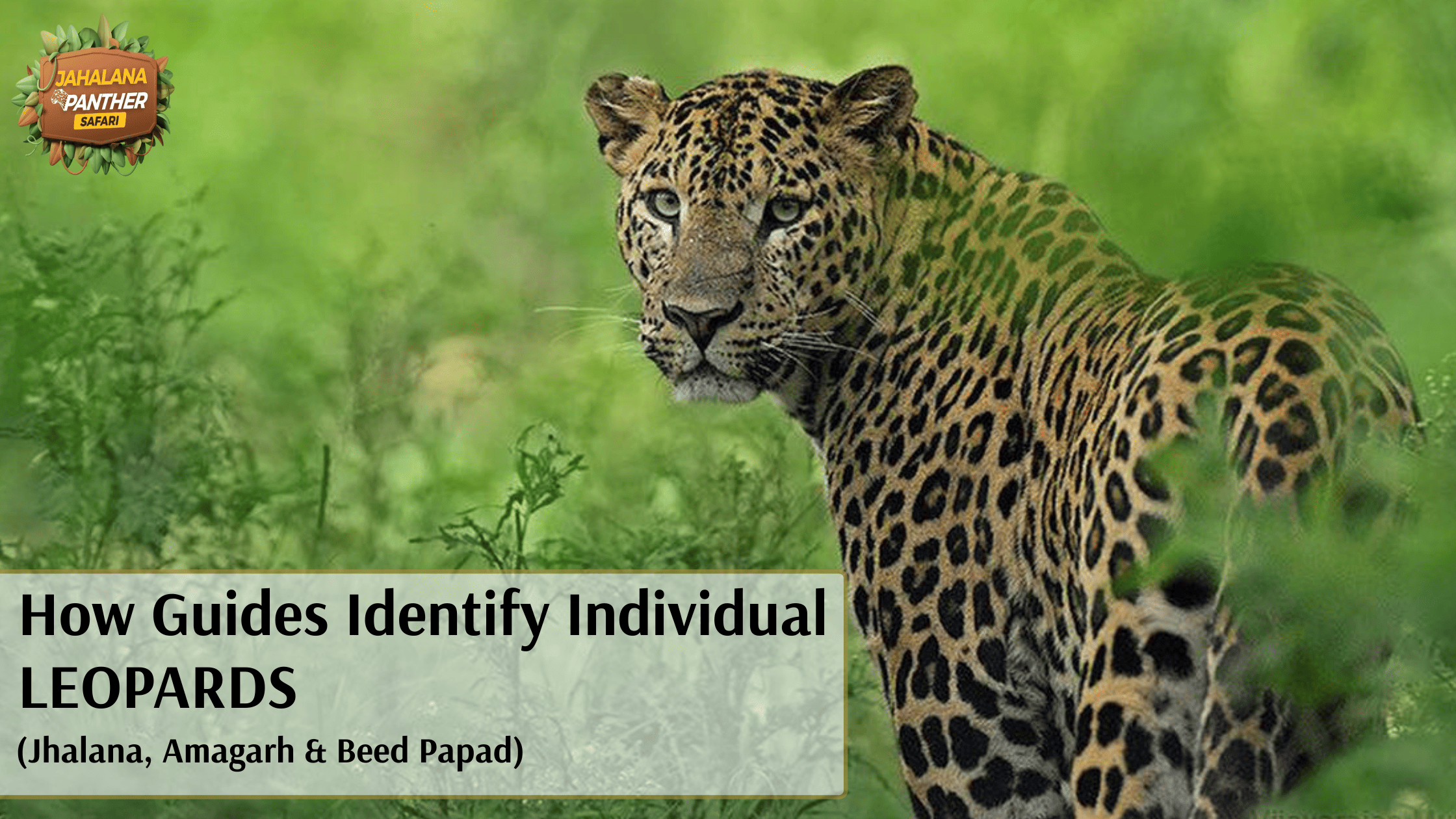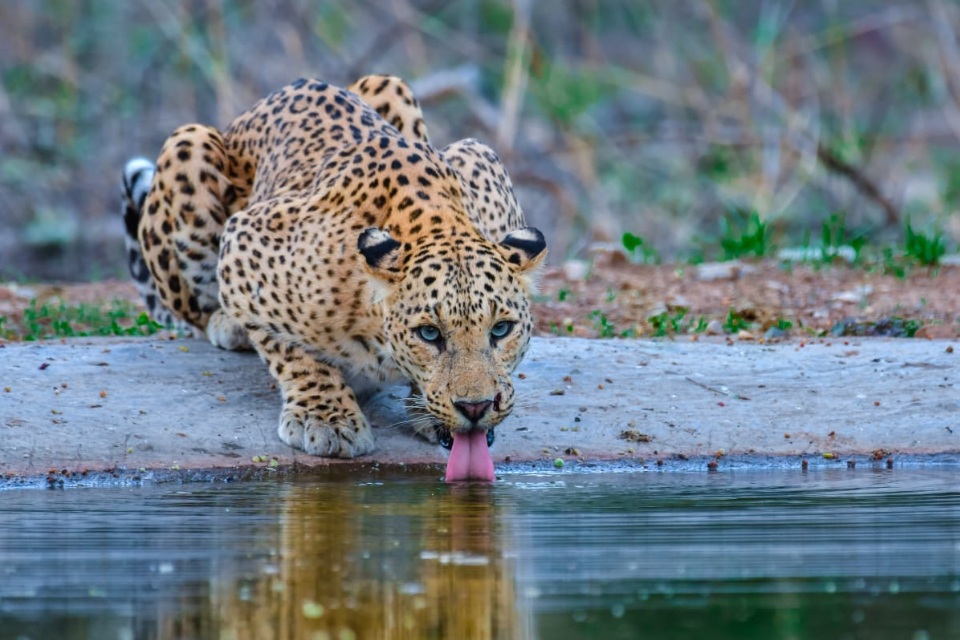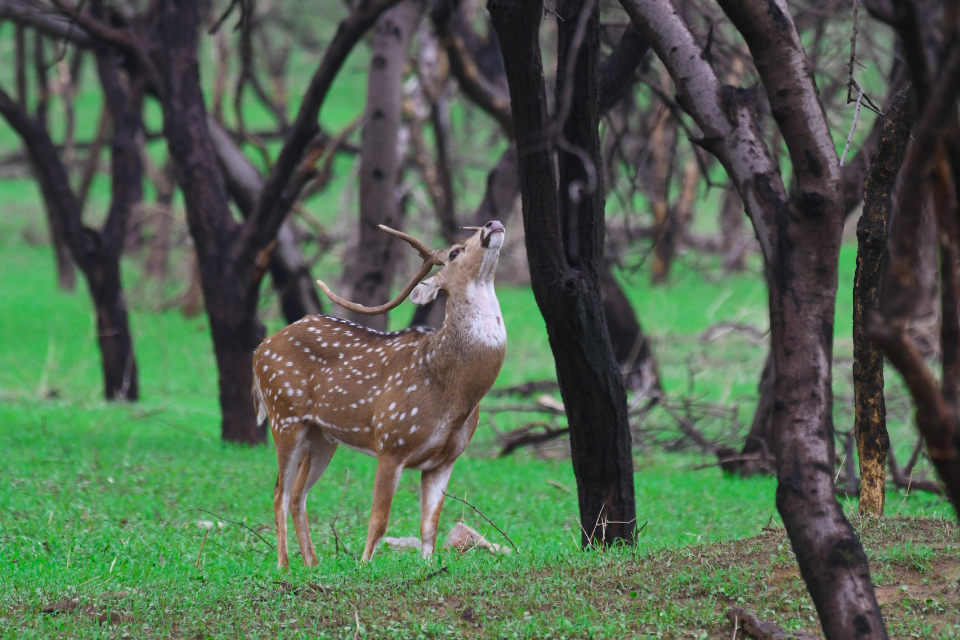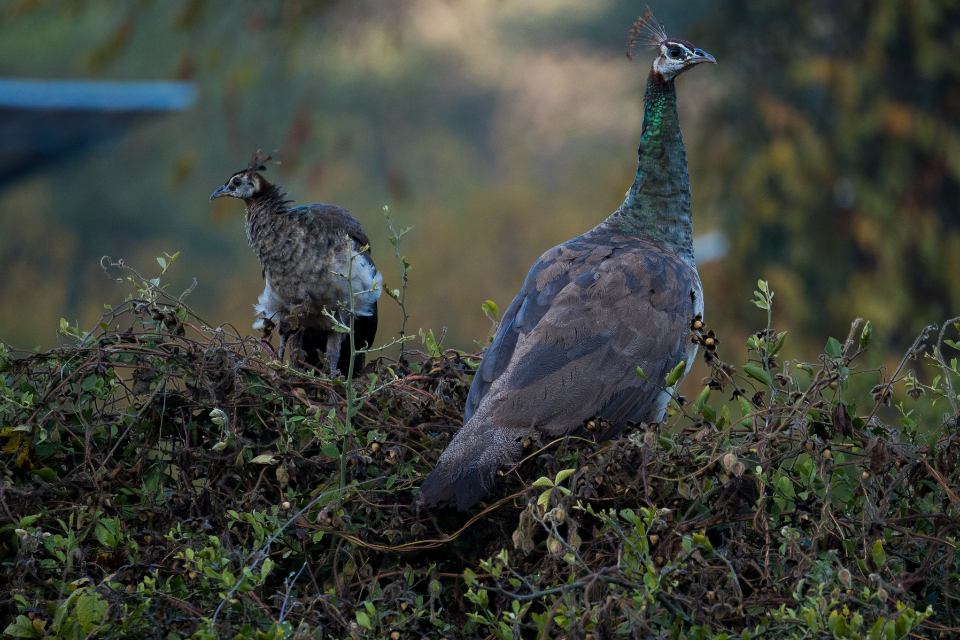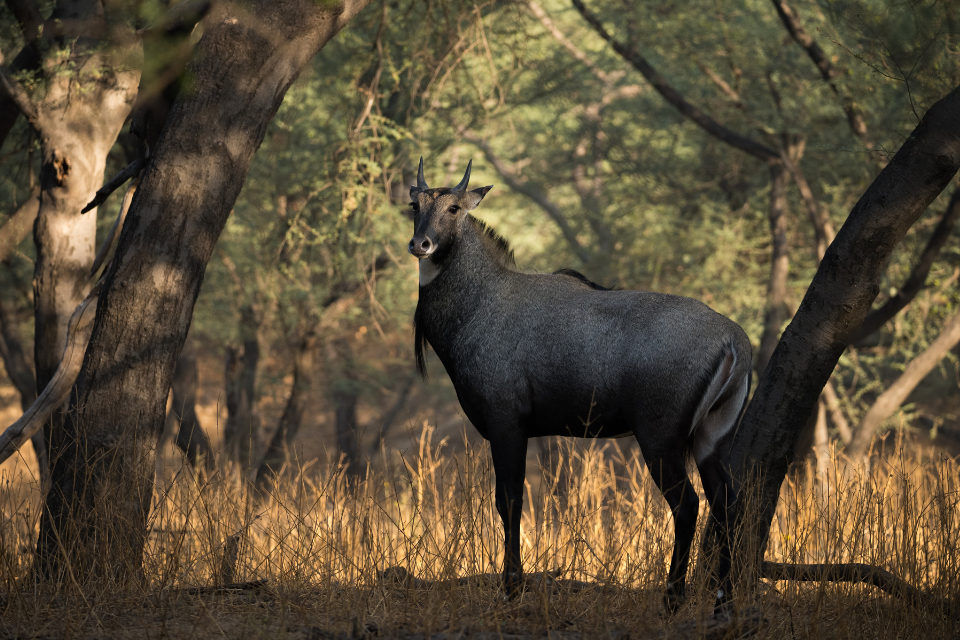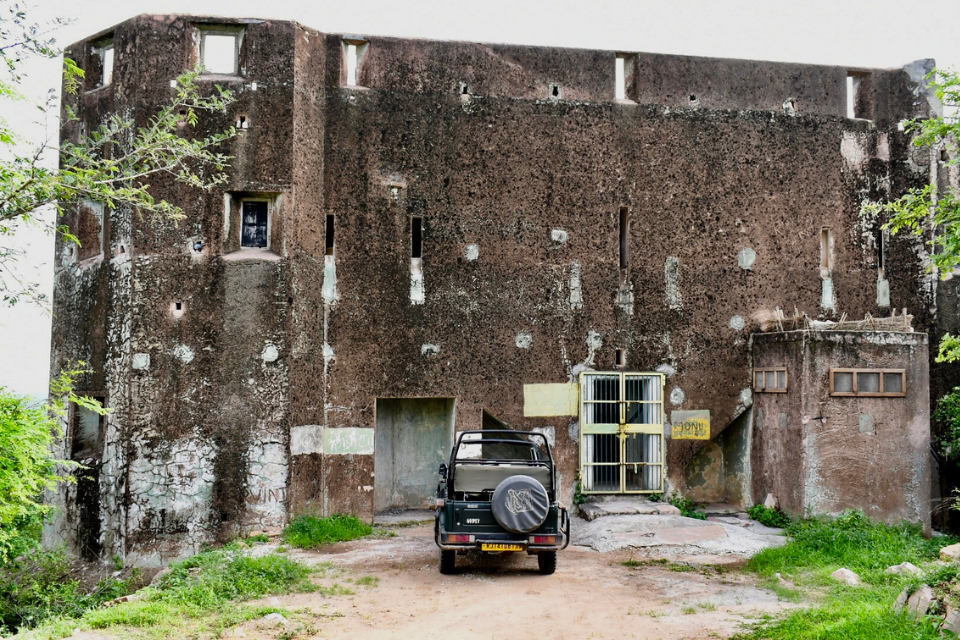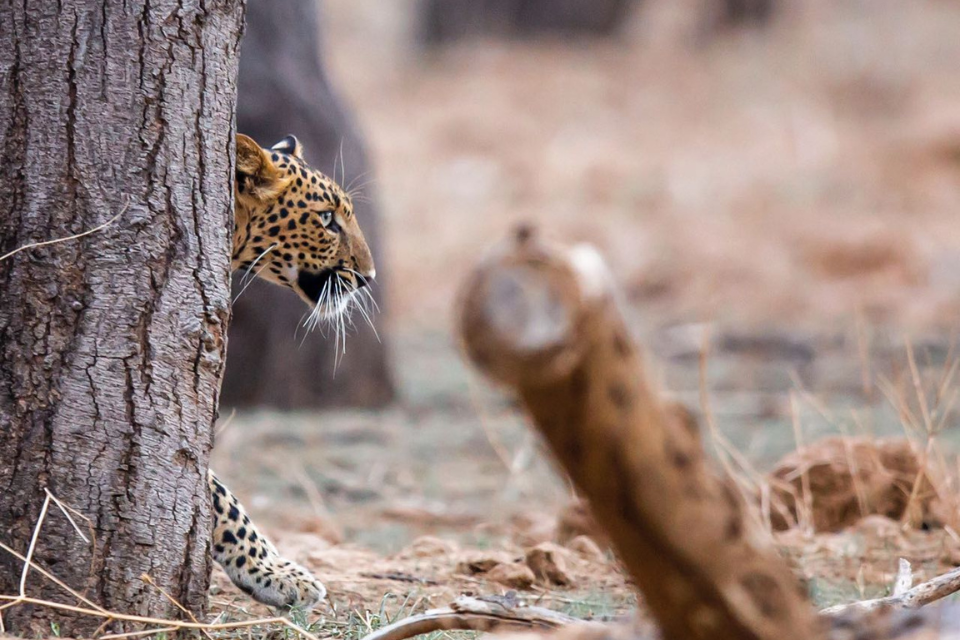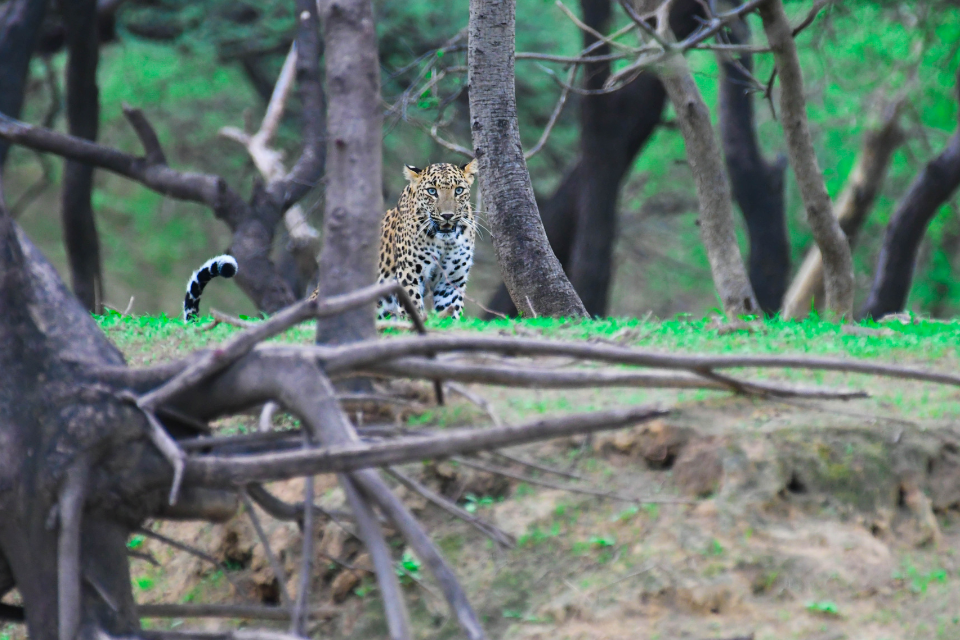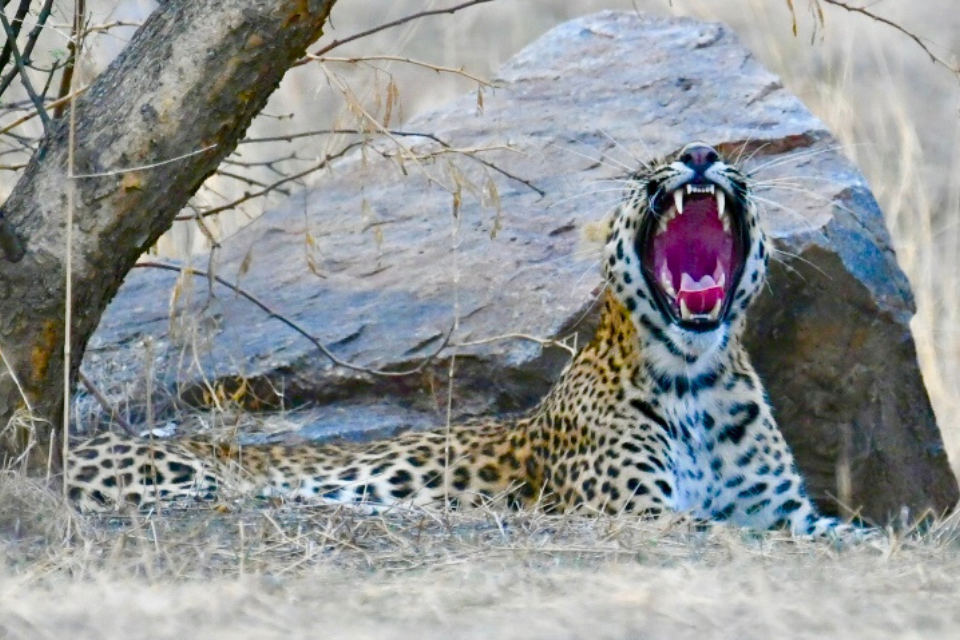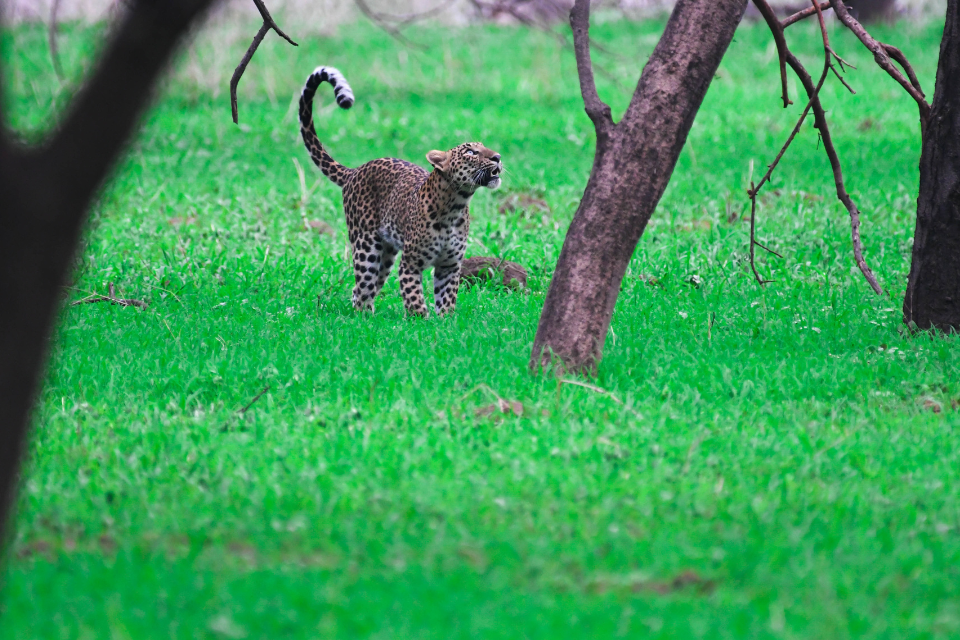- August 14, 2025
How Guides Identify Individual Leopards (Jhalana, Amagarh & Beed Papad)
Why this matters (in plain English)
On safari, a guide might whisper, “That’s the same female from last week.” How do they know? Because every leopard wears a unique coat—a fingerprint of rosettes (the clusters of spots) that doesn’t repeat between individuals. Researchers, too, routinely identify leopards in camera-trap studies by their rosette patterns, often using both flanks for confirmation.
But pattern isn’t the only clue. Good guides layer whisker-spot maps, scars, ear notches, tail tips, eye marks, body shape—and even behavior—to make a confident call. Below is the exact system you can use across Jhalana, Amagarh, and Beed Papad.
The fast checklist (what pros look at first)
- Rosette map (left & right flanks) – primary ID; photograph both sides if you can. Studies confirm researchers match individuals reliably by rosette patterns in photos.
- Face & whisker-spot rows – small, dark follicle spots in a stable pattern along the muzzle; widely used in big-cat ID.
- Tail tip & rings – look for a white tip, broken rings, or kinks.
- Ears & scars – nicks, tears, healed scratches become strong second-pass features.
- Shoulders & hips – look for a distinctive cluster (e.g., “3-dot triangle behind left shoulder”).
- Sex/age cues – head size, neck thickness, body depth (supporting evidence only).
- Behavior – route fidelity, favorite ledges, waterhole timing (supporting evidence only).
Tip: When you can’t see the flank clearly (grass/branches), a muzzle close-up with whisker spots still helps—especially in repeat encounters.
Rosettes 101: the main identifier
- Uniqueness: Leopard pelage is individually unique; researchers haven’t found two cats with the same distribution of spots/rosettes. This is why camera-trap studies confidently use coat patterns to build individual catalogs.
- Best zones to read: mid-flank (behind shoulder) and hip. Many guides memorize a “signature cluster”—for example, a keyhole-shaped rosette next to three small dots.
- Both sides matter: Studies commonly match both flanks because the two sides differ. If you only ever see one side, your catalog is weaker.
- Watch for confounders: wet fur, dust, strong shadow, motion blur, messy angles, or thick monsoon vegetation can make patterns look different. Always pair a second feature (tail/ear/whisker).
Whisker-spot mapping (underrated but powerful)
Look at the rows of dark dots at the base of the whiskers. As with other large felids, whisker-spot constellations can reliably separate individuals in good photographs and direct sightings. Keep the angle square to the face; even a partial row helps if you already have a probable match from the flank.
How to annotate quickly in the field:
- Count upper row spots from the nose outward (e.g., “R-upper row: 3 clustered + gap + 2”).
- Note unique gaps or a triangle formed by three spots near the lip line.
- Save a cropped face photo alongside each flank in your log.
Secondary markers that save the day
- Tail: A kink, crooked tip, or broken ring pattern is gold.
- Ears: Tears/notches and dark rims show up well in back-lit frames.
- Scars: Forehead and shoulder scars can persist for months.
- Facial markings: A pale eye-stripe or asymmetrical tear mark can be distinctive.
Gait & posture: Not immutable, but experienced guides notice repeatable posture (e.g., low, fluid shoulder roll in one male).
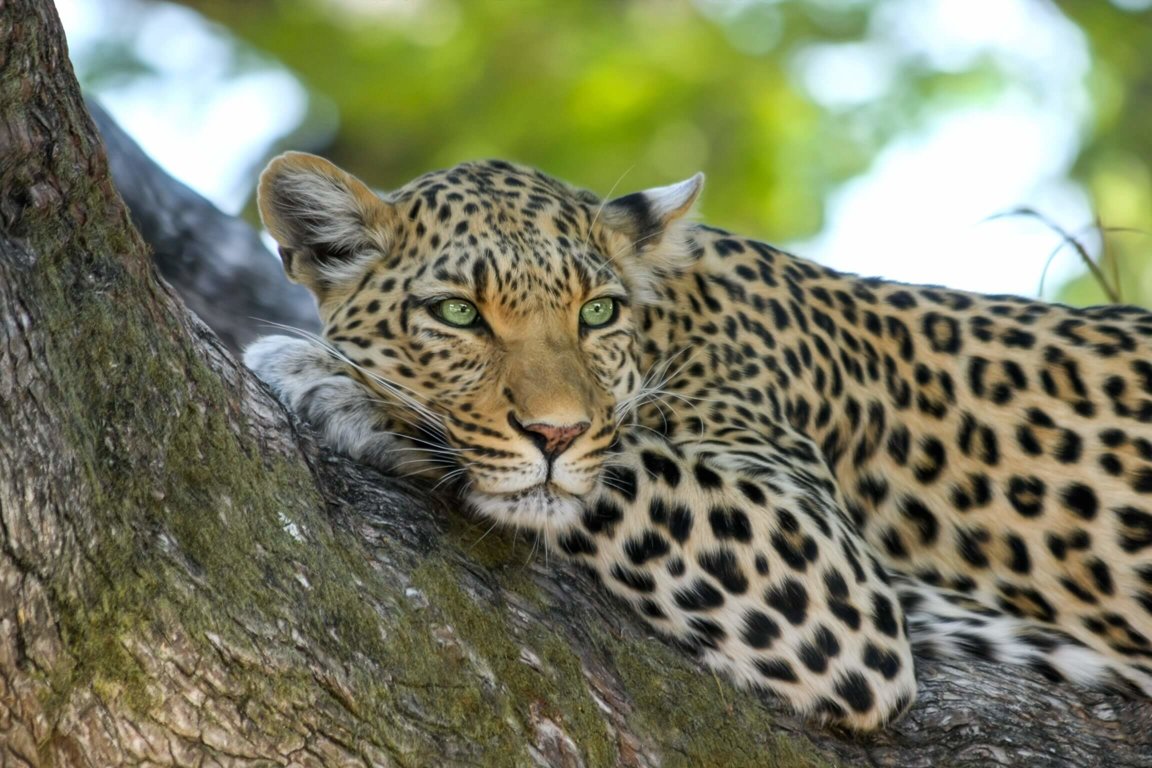
Building a simple, reliable ID catalog (for your team)
- One page per leopard: Title with a neutral code (e.g., JL-F-07), not a touristy nickname; add nickname later if policy allows.
- Four-photo grid: Left flank, right flank, face/whiskers, tail/ears.
- Signature notes: “Left shoulder: three small rosettes forming a triangle; right hip: broken rosette with central dot.”
- First seen / last confirmed dates and location macro (zone/valley only—avoid den/site precision).
- Behavior notes: tolerance to vehicles, typical time window, favorite ridge/waterhole (broad).
- Source & credit: Guide/driver/photographer attribution; file names; permit/shift for audit.
Bonus: If your operation contributes to Wildbook/Wild Me projects, standardize filenames and metadata—these platforms support individual ID workflows and accept public photo contributions for many species, including leopards (via HotSpotter and related algorithms).
Tools that help (from notebooks to AI)
- Field notebook + smartphone gallery – fastest start; consistent folder naming wins.
- Desktop matching – side-by-side comparison in any photo viewer works surprisingly well once your catalog grows.
- Automated aids:
- HotSpotter (pattern-matching algorithm used across spot/stripe species, incl. leopards).
- Wildbook (open-source platform with integrated matching + mark-recapture tools; runs HotSpotter among others).
- Reality check: automation ≠ magic; accuracy depends on image quality and angle. Recent benchmarking shows algorithm performance varies, so keep human review in the loop.
Field craft: how to capture “ID-useful” photos (without being that tourist)
- Aim for both flanks – if the leopard turns, resist the urge to overshoot one side; grab a clean frame of the far side too.
- Freeze the pattern: 1/1000s shutter for walking cats; faster if running.
- Kill the engine – vibrations blur fine rosette edges.
- No flash – ethics first; bright bursts can disturb wildlife, and most authorities discourage/ban it. (General ethical guidelines emphasize distance and non-disturbance.)
- Think “clean background” – busy scrub hides rosette edges; shift a few inches (seated) for contrast if safe.
- Take a face crop – even one sharp whisker-row shot can clinch an ID later.
Common mistakes (and how to fix them)
- Relying on just one image: Always pair at least one flank + one face/tail cue.
- Forcing proximity: Don’t ask the driver to push closer—animals may leave, and you lose the shot and the moment. Ethics + patience win.
- Confusing similar coats: Two subadults from the same mother can look alike; check whisker spots and tail detail to separate.
- Naming everyone too fast: Avoid premature nicknames; mislabels spread quickly on social media. Use codes until you’re certain.
Data hygiene (so your catalog stands the test of time)
- Standard file names: YYYYMMDD_zone_shift_code_side.jpg (e.g., 20250812_JH_morn_JL-F-07_LF.jpg).
- Geotag discipline: Strip or delay precise GPS data before posting publicly; never share den sites.
- Version control: Keep a shared drive or lightweight DAM; update “last confirmed” dates; archive lookalikes under “Pending.”
- Consent & credits: Always credit photographers/guides; keep a simple consent policy for website use.
How this plays out in Jaipur
- Jhalana: Open scrub, rock ledges, and sunrise silhouettes often give crisp flank views—perfect for rosette mapping.
- Amagarh: Slopes and saddles near the Galta Ji/Agra Road side mean more partial views; whisker rows and tail tips carry extra weight.
- Beed Papad: Restored waterholes and fresh tracks after showers make for face-forward photo opps as cats approach to drink—grab that whisker map before the head drops. (Ethics still apply: let animals drink in peace.)
Citizen science: turn your photos into conservation
If you or your guests capture usable flanks/whiskers, consider contributing to Wildbook programs where appropriate (some are India-specific, others global). The HotSpotter algorithm inside Wildbook can help match your leopard against known individuals; humans verify the final call. These systems exist to scale population monitoring with help from the public—photo quality and good metadata are your superpowers.
Ethics corner (non-negotiable)
- Distance over drama: Use telephoto, not proximity; let the animal choose its path.
- No bait, no playback, no calling in cats.
- Zero flash at night/low light.
- Delay sensitive posts: Don’t live-pin exact locations; protect den sites and cubs.
Follow your guide’s code: They’re responsible to the Forest Department and to the animal.
Free mini-worksheet (copy into your Notes app)
- Date / Shift / Zone:
- Observer(s):
- Left flank signature: (e.g., “triangle of 3 small rosettes behind shoulder”)
- Right flank signature:
- Whisker spot notes: (e.g., “R-upper row 3+2 with gap; triangle near lip”)
- Tail/Ear cues:
- Scars/Other:
- Behavior notes: (route, waterhole style, tolerance)
- Photos: (file names / credits)
- Confidence: High / Medium / Low (and why)
FAQs
1) Are rosette patterns really unique for each leopard?
Yes. Peer-reviewed work and field practice treat rosette distributions as individual; camera-trap studies routinely identify leopards by these patterns and often use both flanks for accuracy.
2) What if I only see the face—no flank?
Use whisker-spot rows and any ear/tail cues. Whisker patterns are recognized in felid ID literature as a valid distinguishing feature when photographed clearly.
3) Can software identify “my” leopard automatically?
Tools like HotSpotter and Wildbook compare spot/stripe patterns to databases, then humans verify. Great assist, not a replacement for clean field photos.
4) Is it okay to move the vehicle closer for a better ID photo?
No. Ethical photography guidelines stress distance and non-disturbance; use longer lenses and patience instead.
5) Do patterns change as leopards age?
The arrangement of rosettes and whisker spots is stable; fur condition and scars change, and lighting/mud can mislead—hence the need for multiple features and clean angles. (General felid ID practice supports stability of these patterns for adults.)
Disclaimer All images used in this blog are either sourced from public domain or credited to their respective owners. If you are the copyright holder of any image and wish to request its removal or proper attribution, please contact us at [email protected]
